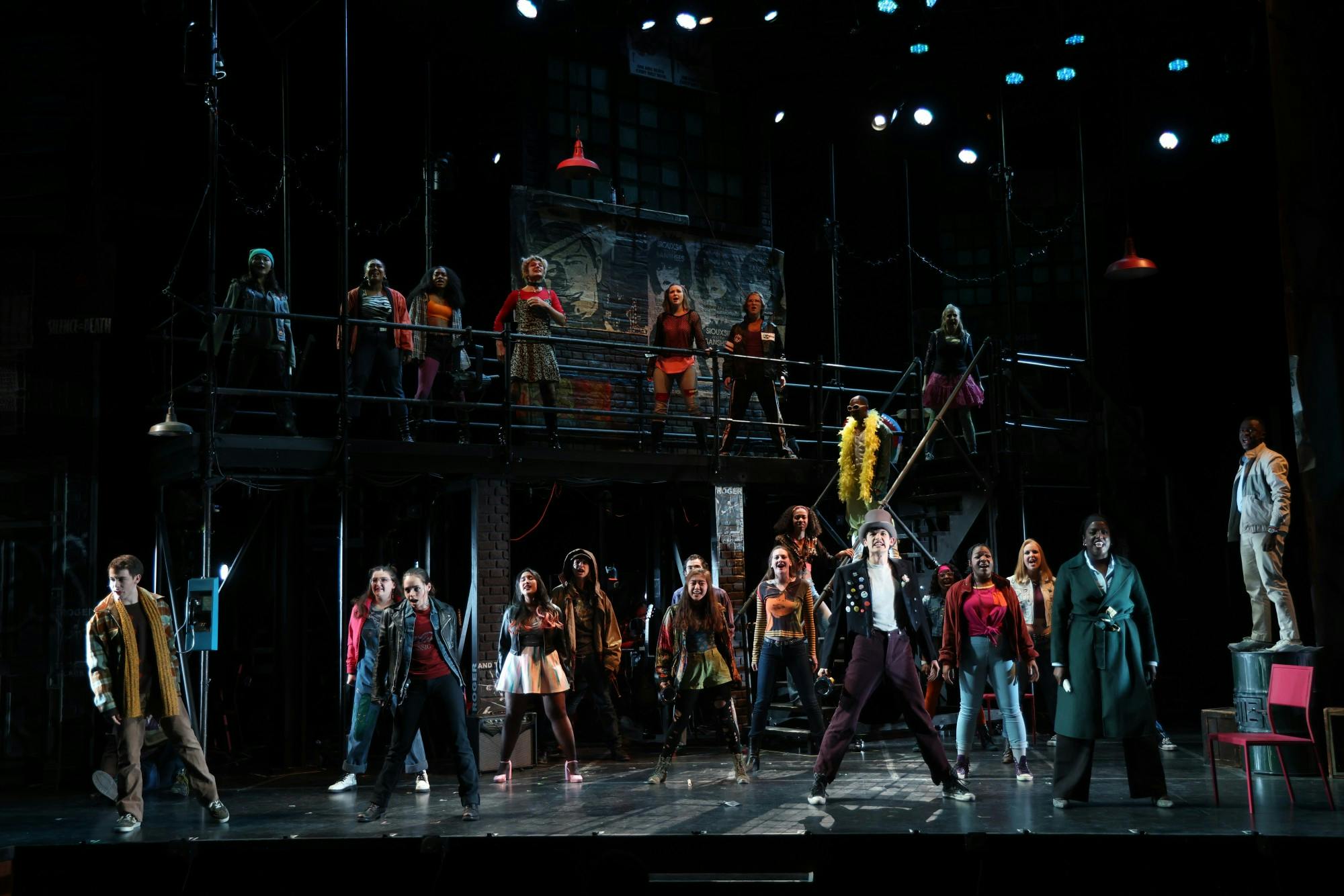The Dartmouth theater department’s MainStage production for the winter term, the rock musical “RENT,” opened on Feb. 18, marking the first time that the show has been produced at Dartmouth. The two-act musical, written and composed by Jonathan Larson, follows a group of impoverished Bohemian artists in their twenties living in the 1980s amid the AIDS epidemic in New York.
The musical is directed by Northern Stage producing artistic director and Dartmouth lecturer Carol Dunne, who said she seeks to emphasize the themes of resilience and joy during an epidemic, something particularly relevant for Dartmouth students living through a pandemic today.
“When I read it, my role was to take the time period very seriously, to take the AIDS crisis very seriously,” Dunne said. “And I really wanted our students to understand what was happening, in order to maybe see what needs to change now.”
Dan Kotlowitz, theater department chair and the lighting and projections designer for the musical, explained that while Dartmouth had been looking to produce “RENT” for years, the rights of the musical have only recently been made available.
“The sense of community, which is really powerful on-stage, we thought would be really important for students at this point,” Koltowitz said.
In “RENT”, numerous stories are being told: of Mark, the Jewish-American filmmaker and narrator; of Roger, the ex-drug addict and HIV-positive singer who wishes to write one last song before he dies; of Mimi, Roger’s love interest who is a drug addict and stripper; of Tom, an anarchist who has AIDS and his love interest, Angel, a drag queen; of Maureen, a performance artist and her lover Joanne, a public interest lawyer, and of Benny, the landlord who abandoned the Bohemian lifestyle. Each story is intertwined with the other, and at moments of crisis and tragedy — such as when Angel passes away from AIDS or at a post-protest party — the community that the characters have built is always present.
Jay Yim ’25, a member of the tech crew, said that working on “RENT” as a freshman has been a unique experience.
“As a first-year work-study student, “[RENT]: was the first major production I took part in,” said Yim. “During the fall, we did have some opportunities to set up some things in the Bentley Theater, but they were very different. The Moore Theater is way bigger, and it definitely required more time to build the set.”
During the majority of rehearsals, some students or faculty members would have to join on Zoom due to COVID-19 while others would be there to rehearse in person. For instance, Kotlowit had to direct the show’s lighting from Zoom after testing positive for COVID-19 during the term.
“It was challenging when our lighting designer was absent when we needed him the most,” Yim said.
The process of designing the lighting was more virtual than Koltowitz expected.
“I actually built my light cues on a computer screen,” Kotlowitz said. “They Zoomed me into technical rehearsals, which if you had asked me two weeks earlier if it was possible to do, I would have said there’s no way.”
This production of “RENT” is the first time both Dartmouth and Dunne are producing this musical, and Dunne explained that one of the elements to her approach to directing was to emphasize the context of the epidemic and the setting of the musical in New York in the eighties. As a result, when first presented with the models for the set, Dunne made the decision to turn the set 180 degrees from its normal orientation to reflect more of the “ugliness” of the musical’s setting. The audience was able to simultaneously see the painted set pieces and the unpainted wooden backing.
“I didn’t want it to make it slick and as musical-theater-y as some of the recordings that I have heard have been,” Dunne said. “New York had been a really jagged place in the eighties and we’ve tried to anchor it in a bit of ugliness … to reflect a bit more of the grittiness of New York and the truth of that horrific AIDS pandemic.”
Dunne also noted that at one point during rehearsals, an intimacy director was brought in to teach students how to be able to convey physicality and intimacy in safe ways when acting.
“There’s been a movement in theater and film that deals with intimacy, and the way it’s been done was not terribly careful across the industry,” Dunne said. “I think as a woman director I felt sensitive about those things … Ultimately, because of COVID, there isn’t much, but just that care of students having to deal with intimacy in performances was really beautiful.”




